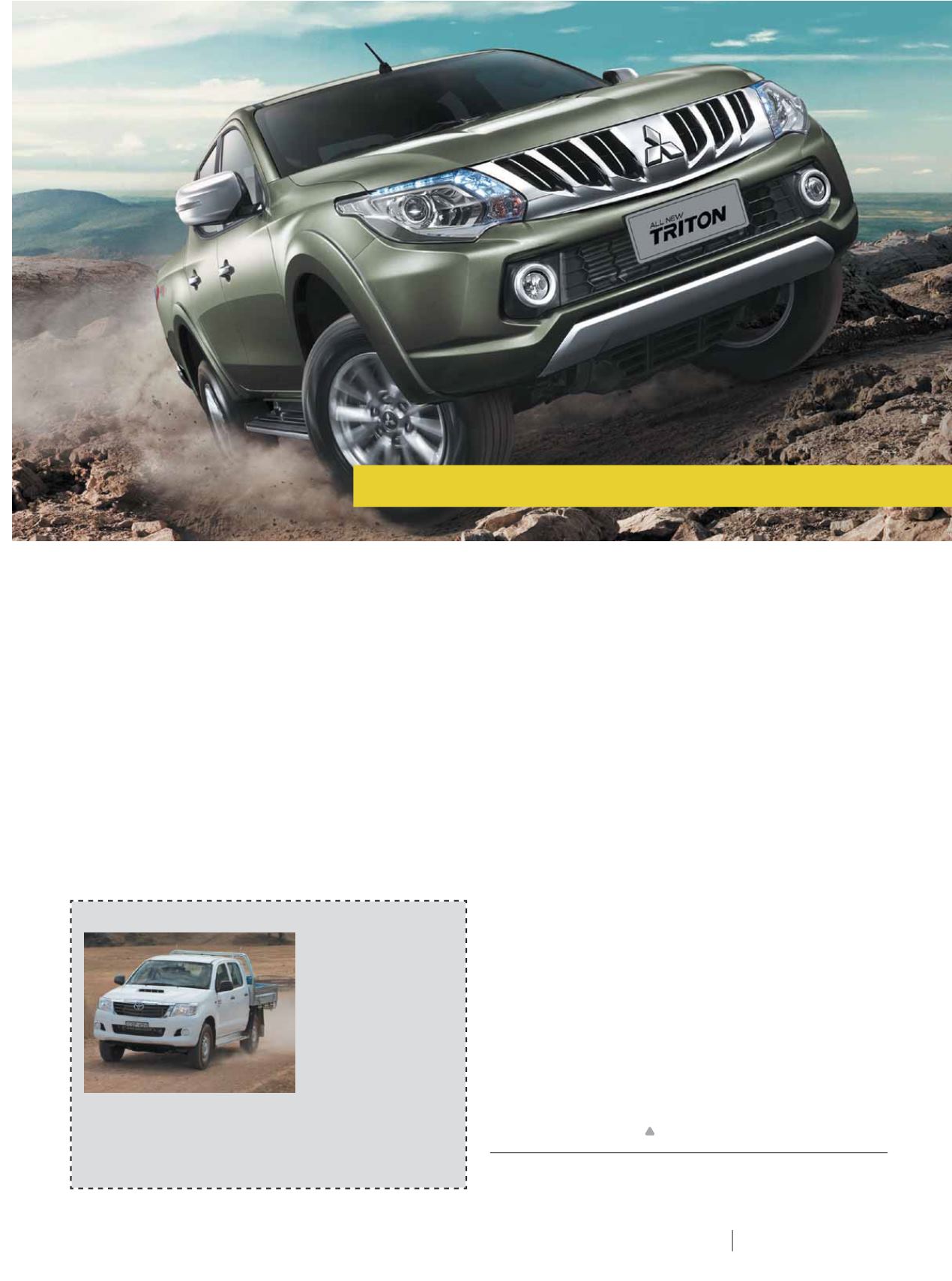

P L UMB I N G CO N N E C T I O N
A U T UMN 2 0 15
1 0 5
M
itsubishi has taken the covers off its fifth-generation
Triton one-tonne ute ahead of its Australian launch
around mid-2015.
Local specifications are still to be revealed, but the fully
redesigned Thai-built ute – to again be offered in single, club
and dual cab body styles, with 4x2 and 4x4 drivelines – is billed
as being more efficient and comfortable while maintaining a
rugged edge required for the working class in which it is one of
the biggest-selling models.
One of the headline acts is an all-new ‘4N15’ 2.4L MIVEC
turbo-diesel engine, which produces 133kW of power at
3,500rpm and 430Nm of torque from 2,500rpm – up 2kW and
a useful 30Nm compared to the high-output version of the
current bigger-displacement 2.5L diesel (dubbed ‘4D56’).
Mitsubishi claims a particularly low compression ratio of
15.5:1 and lightweight construction of the engine, including an
aluminium cylinder block, have helped achieve a 20% reduction
in fuel economy – and a corresponding reduction in CO2
emissions – over the current top-shelf 2.5.
It combines with a newly developed six-speed manual
gearbox or five-speed automatic with a ‘Sport’ mode, driving
either the rear wheels or all four via the carryover Easy Select
4WD system.
Now with common rail direct fuel injection, the 4D56 engine
continues for select markets – output remains at 94kW/240Nm
for 4x2 models and 131kW/400Nm for 4x4s – while the
94kW/194Nm ‘4G64’ 2.4L petrol engine also carries over with
some minor improvements.
Vehicle handling, stability and refinement are said to have
gone up a notch, thanks in part to a 7% improvement in
torsional rigidity that stems from measures such as more
extensive use of high-strength (but lightweight) steel in both
the cab and cargo bed.
The cabin offers more room for occupants in all directions,
including rear-seat legroom in the double cab, and plenty more
in the way of general comfort, amenities and equipment, from
the heavily upgraded infotainment unit and bigger seats to
improved all-round visibility and a keyless start/stop system.
It has not, however, come at the expense of carrying capacity.
The new model continues to sit on a 3,000mm wheelbase,
with overall length stretching a little further on all body styles.
The load area is virtually the same length as the equivalent
current model, and while the width is the same, Mitsubishi
says it has sculpted out a deeper bed to give each cab variant a
higher payload capacity.
Mitsubishi Motors
www.mitsubishi-motors.com.auTOYOTA 4X4 SR DOUBLE CAB
Toyota says it had small
and medium-sized
businesses such as
plumbers, electricians
and building industry
contractors top of mind
with the introduction of
a new Hilux variant that
combines an automatic
transmission with its
126kW/360Nm 3.0L
turbo-diesel engine and dual cab chassis body style.
It comes in the highly equipped SR model grade and is
priced from $43,740 plus on-road costs – $1,500 less than the
identically equipped pick-up version. Combined-cycle fuel
economy is 8.7L/100km.
MITSUBISHI TRITON
















